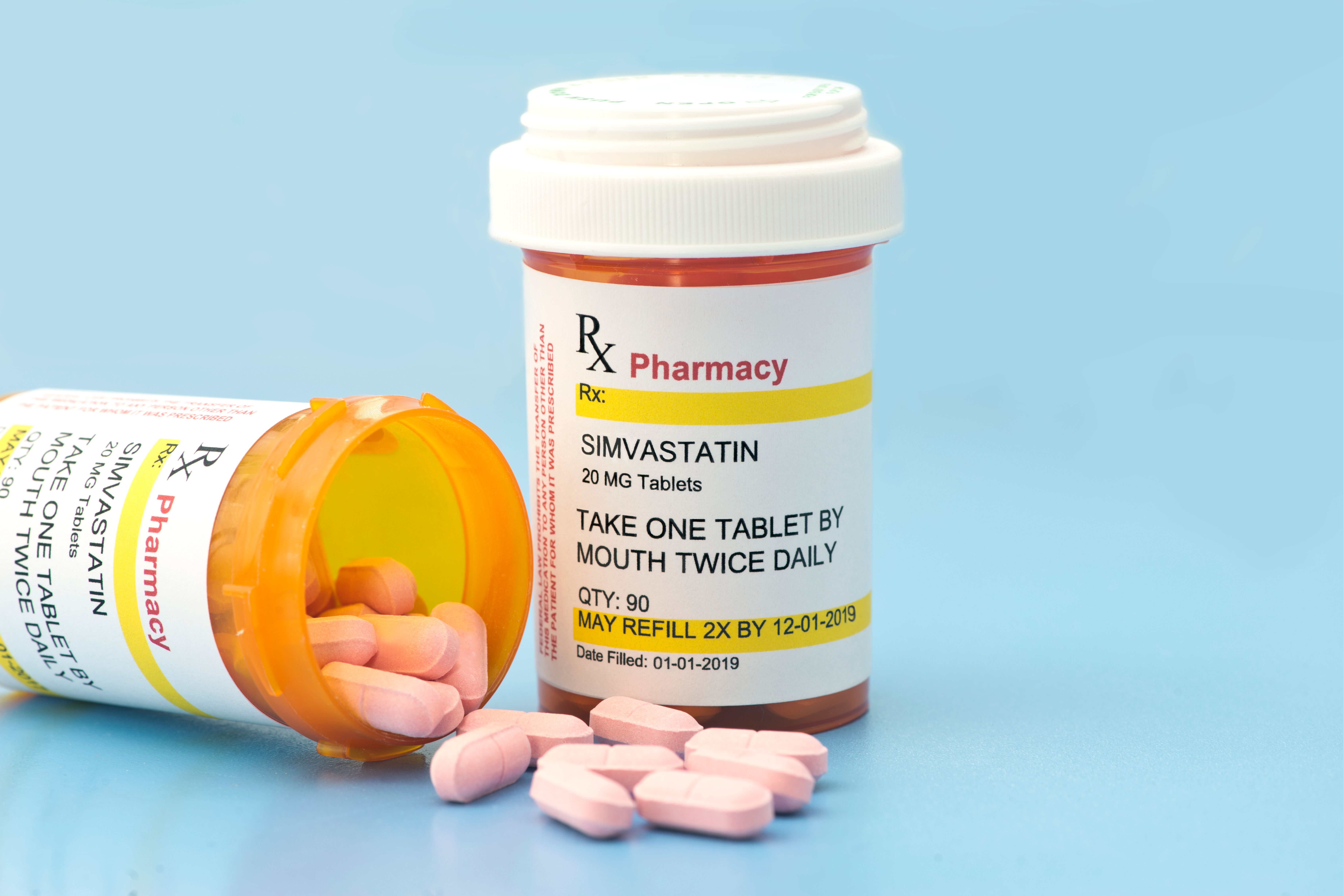Micellar Liquid Chromatography Quantifies Three Statins in Commercial Oral Solid Dosage
Rosuvastatin, lovastatin, and simvastatin were determined for dosage quality control in pharmaceutical formulations using hybrid micellar liquid chromatography (HMLC).
A new study in the Journal of Chromatography A sought to improve upon the dosage accuracy of lipid-lowering agents in the pharmaceutical industry using hybrid micellar liquid chromatography (HMLC), countering the questionable quality of noncertified, black market versions of the drugs in question (1).
Simvastatin Prescription Bottles | Image Credit: © Sherry Young - stock.adobe.com

HMLC utilizes biodegradable salt-based micellar solutions with a low proportion of organic solvent, enabling the solubilization of poorly water-soluble drugs. The study validated the HMLC results and demonstrated its potential for routine pharmaceutical quality control in oral solid dosage forms, providing a valuable analytical solution for determining multiple compounds efficiently.
Researchers in Spain and India collaborated on the work, which examined the statins rosuvastatin, lovastatin, and simvastatin, available mainly under the brand names Crestor, Mevacor, and Zocor, respectively. Statins help control the plasmatic concentration of lipids and are first-line drugs for treating hypercholesterolemia and patients at moderate to substantial risk of cardiovascular events. Because they are generally well tolerated and have minimal side or long-term effects, these medications are often prescribed as lifelong treatments, in oral solid dosage form, and are more powerful, compared to other lipid-lowering medications, at reducing low-density lipoprotein cholesterol (LDLc, or “bad cholesterol”) and very low-density lipoprotein cholesterol (VLDLc).
But for statins to achieve successful results in patients, they must be dosed accurately, and a worldwide black market exists in which these drugs are made and sold cheaply at a quality both questionable and noncertified. Quantities of rosuvastatin, lovastatin, and simvastatin, as well as the combination of lovastatin and simvastatin, have been analyzed in the past by methods based on high performance liquid chromatography with ultraviolet detection (HPLC–UV). The researchers in this study, seeking a more green and sustainable approach as well as one that could quantify all three statins simultaneously, instead proposed hybrid micellar liquid chromatography (HMLC) using sodium dodecyl sulfate (SDS), an anionic surfactant.
Hybrid micellar solutions are comprised of biodegradable salts with a low (<15%) proportion of organic solvent, but can still solubilize poorly water-soluble drugs in reasonable time because of the hydrophobic micellar pseudo-phase. HMLC has been previously used to detect not only other drugs in urine and plasma, but also pesticides and illicit additives in food, natural dyes in plant root and water, and synthetic colorants in sweat.
What the researchers found was that the effect of SDS on elution strength was more important than that of the organic solvent. Furthermore, results were validated by the guidelines of the International Council for Harmonization. These included specificity, linearity (r2 > 0.990), calibration range (1.5–15 mg/L for rosuvastatin, 0.5–10 mg/L for lovastatin and simvastatin), limit of detection (0.4, 0.2, and 0.15 mg/L for rosuvastatin, lovastatin and simvastatin, respectively), trueness (98.8–101.7%), precision (<2.7%), carry-over effect, robustness, and stability. Those values were within the acceptance criteria of the Methods, Method Verification and Validation of the Food and Drug Administration–Office of Regulatory Affairs, according to the study.
The selected HMLC method, therefore, served not only to resolve the analytical challenge of determining three compounds at once, but showed its potential for routine pharmaceutical quality control in oral solid dosage forms.
Reference
(1) García-López, L.; Peris-Vicente, J.; Bose, D.; Durgbanshi, A.; Carda-Broch, S. Micellar liquid chromatography as a sustainable tool to quantify three statins in oral solid dosage forms. J. Chromatogr. A 2023, 1698, 464000. DOI: 10.1016/j.chroma.2023.464000
Investigating 3D-Printable Stationary Phases in Liquid Chromatography
May 7th 20253D printing technology has potential in chromatography, but a major challenge is developing materials with both high porosity and robust mechanical properties. Recently, scientists compared the separation performances of eight different 3D printable stationary phases.
Characterizing Polyamides Using Reversed-Phase Liquid Chromatography
May 5th 2025Polyamides can be difficult to characterize, despite their use in various aspects of everyday life. Vrije Universiteit Amsterdam researchers hoped to address this using a reversed-phase liquid chromatography (RPLC)-based approach.
New Method Explored for the Detection of CECs in Crops Irrigated with Contaminated Water
April 30th 2025This new study presents a validated QuEChERS–LC-MS/MS method for detecting eight persistent, mobile, and toxic substances in escarole, tomatoes, and tomato leaves irrigated with contaminated water.
University of Tasmania Researchers Explore Haloacetic Acid Determiniation in Water with capLC–MS
April 29th 2025Haloacetic acid detection has become important when analyzing drinking and swimming pool water. University of Tasmania researchers have begun applying capillary liquid chromatography as a means of detecting these substances.

.png&w=3840&q=75)

.png&w=3840&q=75)



.png&w=3840&q=75)



.png&w=3840&q=75)






